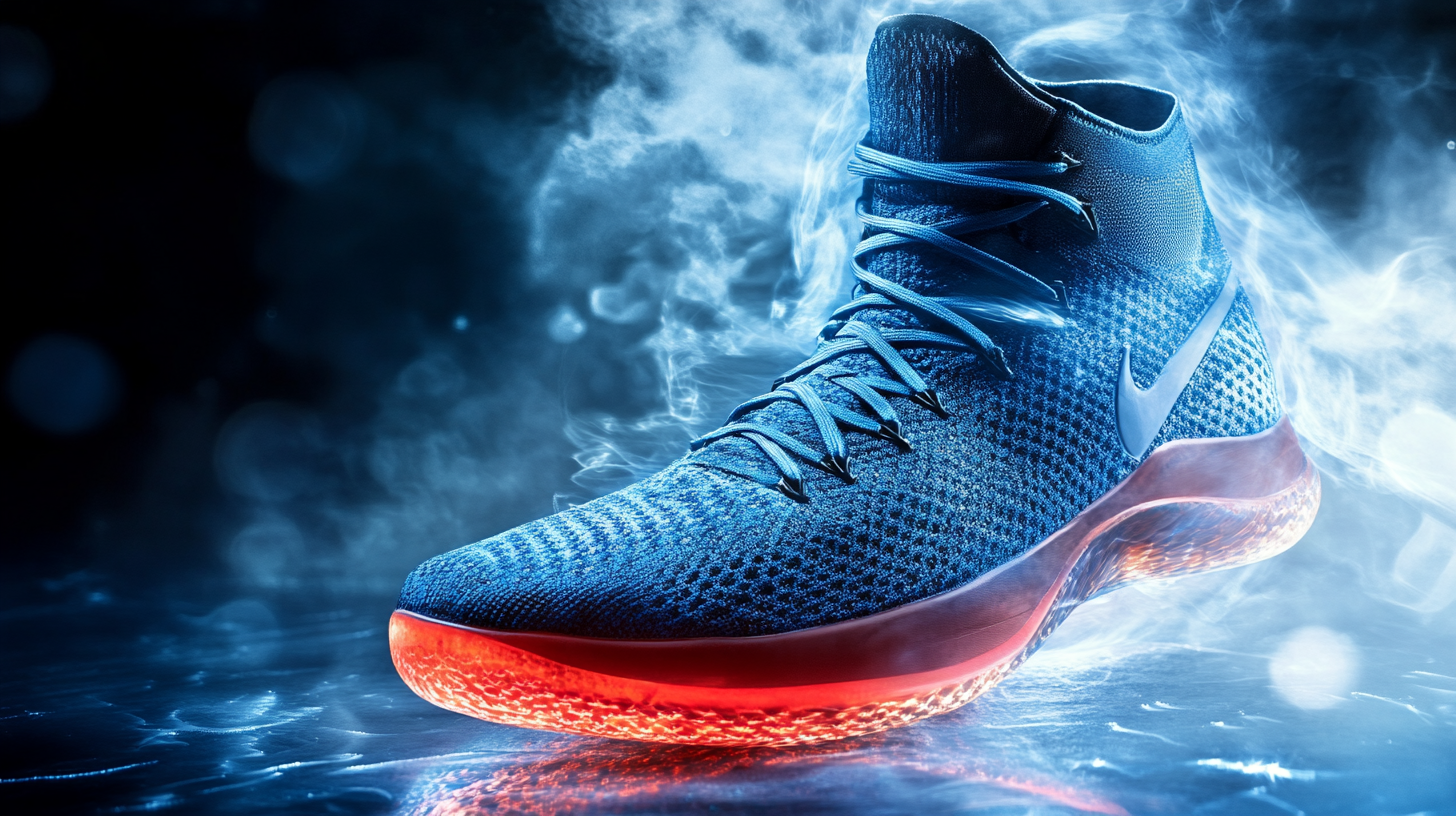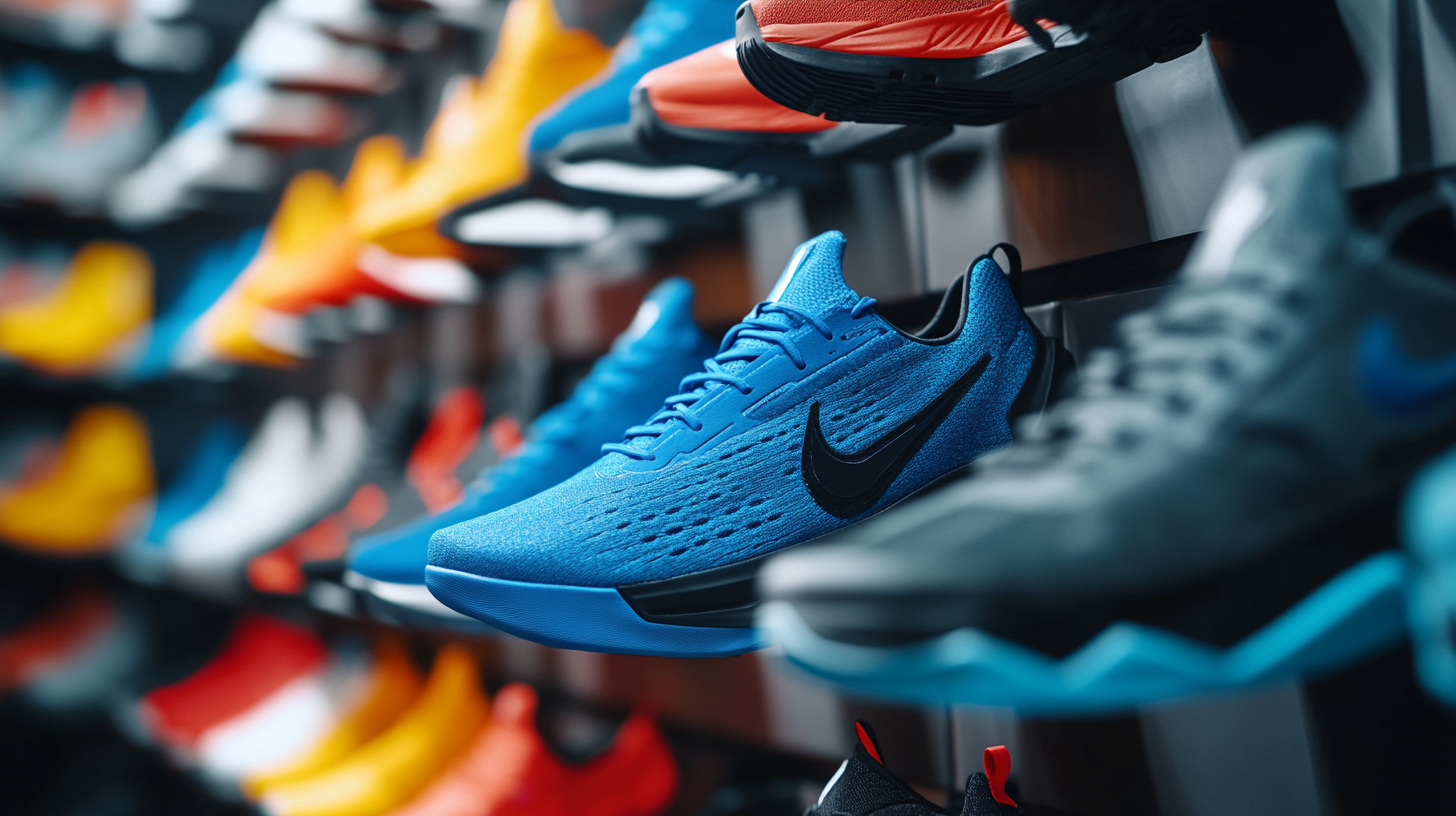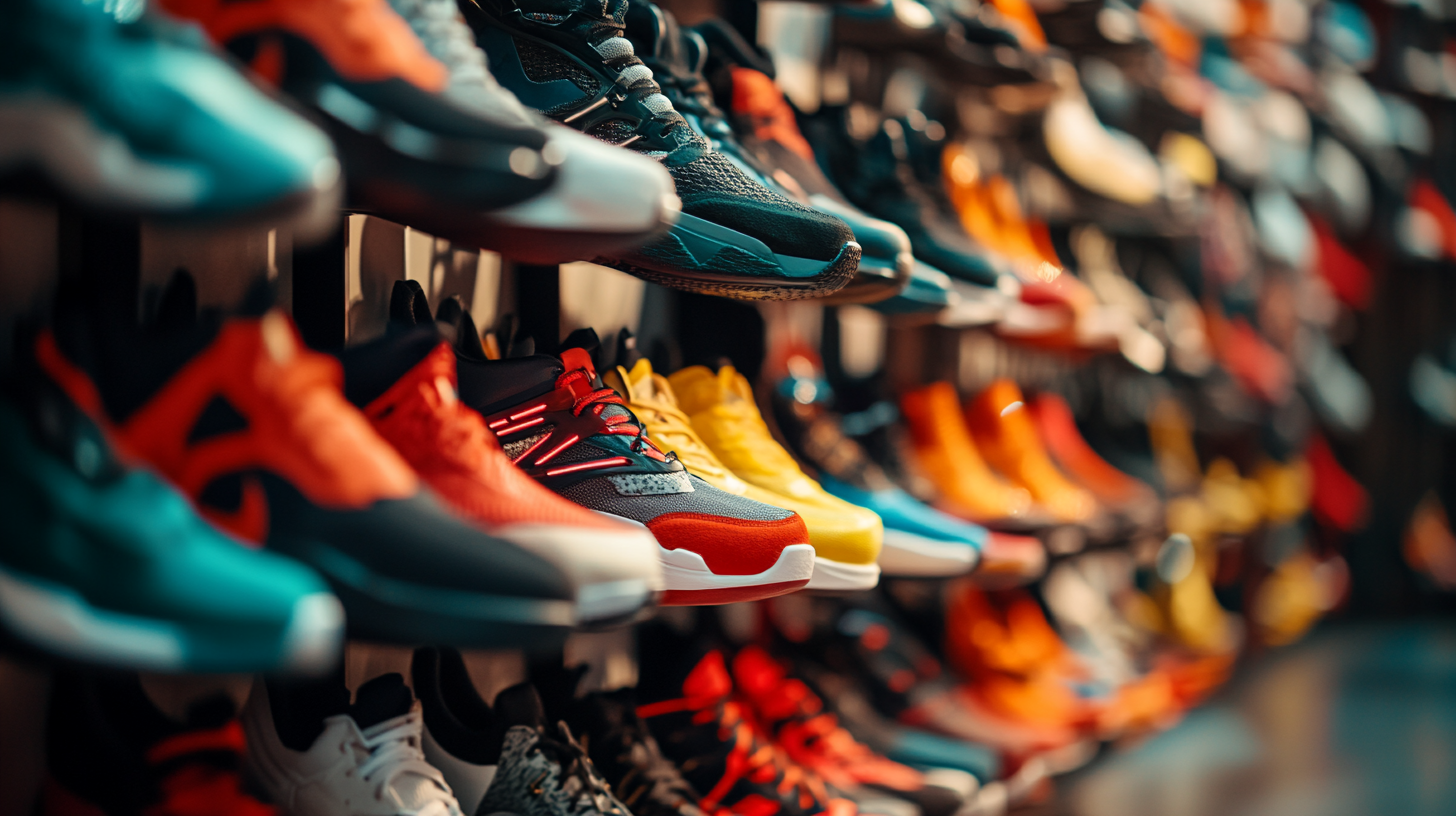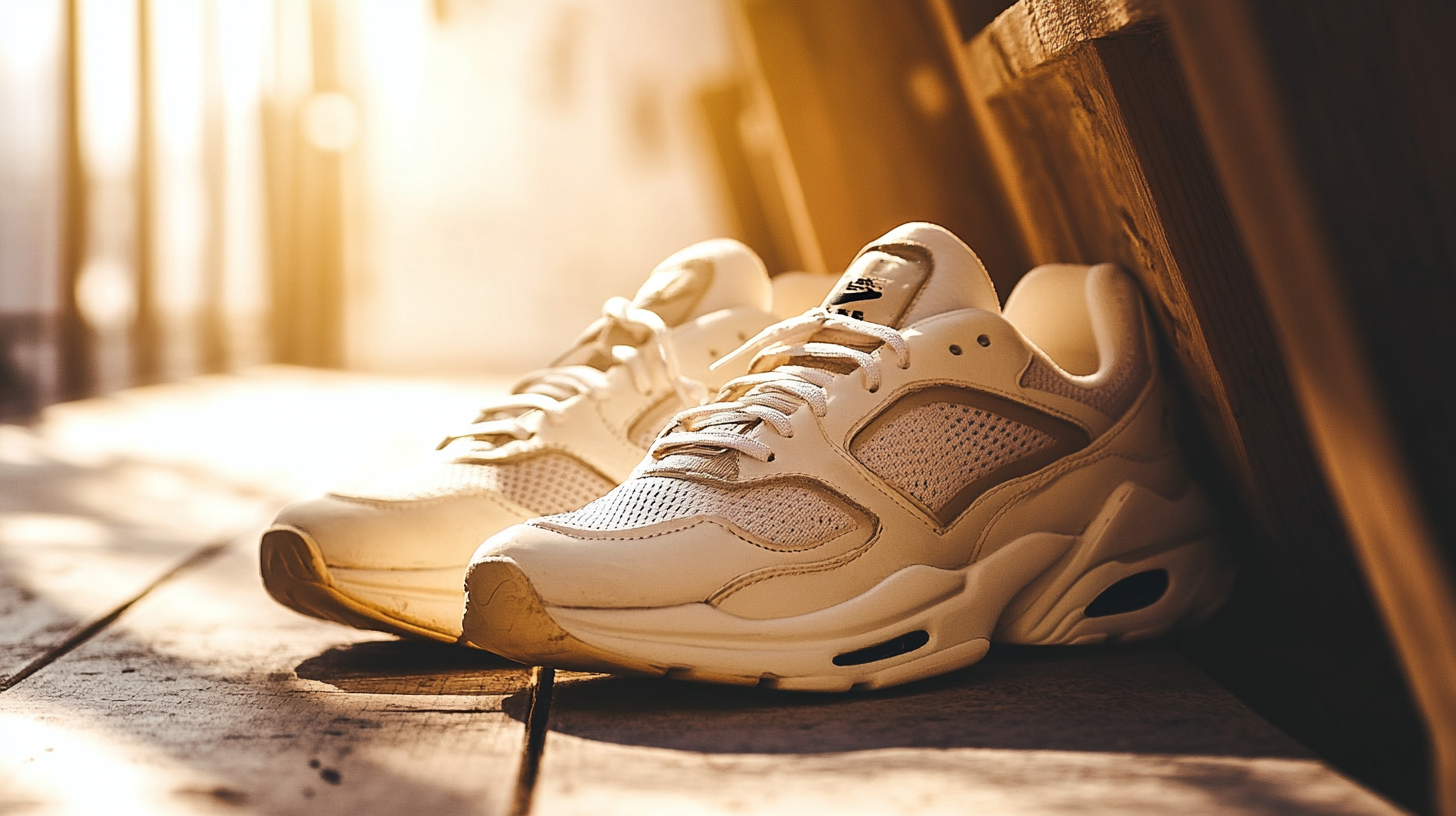
The global sport shoes market has witnessed remarkable growth, driven by increasing consumer awareness regarding physical fitness and the rising popularity of sports activities. According to Grand View Research, the global athletic footwear market size was valued at approximately $95 billion in 2021 and is expected to expand at a compound annual growth rate (CAGR) of 5.3% from 2022 to 2028. This surge in demand necessitates careful sourcing strategies to ensure that brands and retailers can meet consumer expectations for quality, performance, and style.
As competition intensifies, sourcing the best sport shoes has become a pivotal aspect for businesses aiming to establish a strong foothold in the thriving athletic footwear segment. Factors such as material innovation, sustainability, and regional price variations play vital roles in the sourcing process. By employing strategic sourcing techniques, companies can not only elevate their product offerings but also enhance their market presence. In this blog, we will outline five essential tips for sourcing the best sport shoes globally, ensuring that you stay ahead in this dynamic industry.

When choosing the best sport shoes for your specific needs, it's crucial to consider the unique requirements dictated by the type of activity you engage in. For instance, running shoes must offer the right combination of cushioning and support. Recent tests conducted by our women's wear-test team found that the best women’s running shoes not only hug the heels but also cradle the arches, providing both comfort and stability. This fit is essential for maximizing performance and minimizing injury risks. A comprehensive evaluation of the 32 pairs of women’s road running shoes revealed that the most effective options excelled in shock absorption and flexibility. According to industry reports, shoes with adequate cushioning can reduce impact forces by as much as 34% during high-impact activities, which is vital for long-distance runners aiming to enhance their performance. Moreover, the best running shoes of 2025 have been designed with this data in mind, ensuring they cater to a diverse range of foot shapes and dynamic movements. When selecting sport shoes, it is also important to evaluate the terrain and conditions you’ll be facing. For example, trail running shoes feature enhanced grip and durable materials suited for uneven surfaces. Therefore, defining your specific sport shoe needs—whether for road running, trail running, or another activity—will greatly influence your selection process and ultimately lead to improved performance outcomes.

When sourcing the best sports shoes globally, researching reputable brands is paramount. Leading companies like Nike and Adidas have established strong presences in the athletic footwear market due to their innovative designs and targeted marketing strategies. According to McKinsey's annual report, understanding the target market is crucial for brands like Nike, as it not only drives sales but also bolsters their status as industry leaders. As of 2023, Nike continues to hold a significant share in the market, leveraging its robust brand reputation to cater to a diverse consumer base.
Adidas, another powerhouse in sports footwear, showcases a wide range of products that blend style and performance. The company's SWOT analysis highlights its strengths such as strong branding and a commitment to innovation. As the global sportswear market is projected to grow from USD 335.92 billion in 2023 to a CAGR of 9.9% through 2030, companies like Adidas are expected to capitalize on emerging trends and preferences among consumers. This expansion presents ample opportunities for sourcing, as brands continuously invest in research and development to enhance their offerings.
In recent developments, the “super shoe” race has intensified among leading brands, focusing on creating the fastest running shoes to meet the demands of elite athletes. Such innovations reflect the evolving landscape of sports footwear, where performance-driven design becomes a key differentiator. Brands are also beginning to recognize niche markets; for instance, the Canadian brand Hettas is actively investing in women's running research to refine their products and support female athletes. This trend demonstrates the growing importance of understanding demographic-specific needs in the global market.

When it comes to sport shoe design, innovative technologies play a crucial role in enhancing performance and sustainability. The recent CHINAPLAS 2025 event highlighted global advancements in materials and manufacturing processes, showcasing how the integration of innovative plastics and rubber composites can lead to lighter, more durable footwear. This trend is not just a passing phase; the market for advanced sports footwear is expected to grow significantly, driven by consumer demand for high-tech features that improve athletic performance and comfort.
Leading brands are currently pushing the boundaries of sport shoe technology. A recent tech showcase demonstrated breakthroughs such as carbon core technology and nitrogen-infused midsoles, which promise superior cushioning and energy return. This technological shift is evident not just in performance footwear but also in lifestyle sneakers that prioritize both utility and fashion. Brands that embrace these innovations can mitigate their environmental impact by reducing reliance on traditional petroleum-based materials, aligning with the growing trend of sustainable fashion.
The burgeoning focus on eco-friendly design has also seen the introduction of new materials derived from natural sources, catering to a more environmentally conscious consumer base. Reports indicate that the sustainable footwear market is projected to expand rapidly over the next few years, emphasizing the need for brands to innovate responsibly. This evolution in design not only highlights the intersection of technology and style but also positions the athletic shoe industry as a leader in sustainable manufacturing practices.

When sourcing the best sport shoes globally, evaluating sizing and fit across different international manufacturers is crucial. According to a report by the Footwear Distributors and Retailers of America (FDRA), discrepancies in sizing can lead to a high rate of returns, costing retailers an estimated $9 billion annually. This highlights the importance of understanding the variations in sizing standards used around the world. For instance, a size 9 in the U.S. can differ significantly from a size 9 in Europe or Asia, resulting in potential dissatisfaction for the customer if they receive ill-fitting shoes.
One effective strategy is to refer to international sizing charts, which provide a side-by-side comparison of foot measurements to help ensure accurate fit. A study published in the Journal of Foot and Ankle Research found that up to 82% of consumers expressed frustration with inconsistencies in shoe sizing, stressing the need for standardized measurement systems. By investing time in researching these systems and using precise foot measurements, manufacturers can enhance customer satisfaction and minimize the risk of returns.
Moreover, feedback data from major retailers indicates that incorporating customer reviews about sizing and fit can be invaluable. According to the National Retail Federation (NRF), 70% of consumers check online reviews before making a purchase. This emphasizes the need for brands to encourage customers to share their experiences regarding fit, which can help future buyers make informed decisions. By leveraging both measurement systems and customer feedback, brands can better navigate the complexities of global shoe sourcing and offer products that meet diverse consumer needs.
When sourcing sport shoes on a global scale, identifying the right vendors and platforms is crucial for ensuring quality and reliability. According to a recent report by Market Research Future, the global sports footwear market is projected to reach approximately $100 billion by 2025, driven by increasing health awareness and participation in sports. Choosing the right vendor becomes essential in this expanding market, as it can significantly affect both product quality and brand reputation.
One effective strategy is to leverage international trade platforms like Alibaba and Global Sources, which link suppliers and buyers directly. These platforms provide comprehensive supplier ratings and reviews, allowing businesses to assess vendors based on their reliability and product offerings. A study by Statista reveals that about 60% of small to medium enterprises rely on online marketplaces for sourcing products, underscoring the importance of these platforms in today's sourcing landscape.
Additionally, attending international trade fairs and exhibitions can provide valuable insights into potential vendors. Events such as the Canton Fair in China showcase numerous manufacturers, allowing businesses to establish personal connections and verify the authenticity of products. According to the International Trade Centre, approximately 70% of successful sourcing partnerships begin at these fairs, emphasizing their importance in navigating the global supply chain. By combining online resources with in-person networking, companies can effectively identify the right vendors for sourcing sport shoes that meet their specific requirements.
